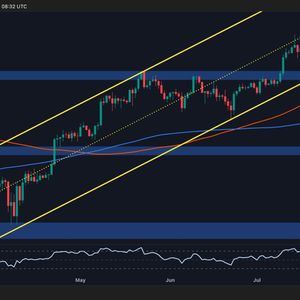Mastercard Is A Buy Amid Stablecoin Fear
8 min read
Summary Stablecoins offer significant benefits for international transactions, but widespread adoption faces hurdles like convenience, security, and merchant-consumer currency agreements. Between 74% and 90% of stablecoin volume is tied to crypto transactions, and when spent on the real economy, card networks are still used. Stablecoins reduce costs and time in cross-border transactions, a huge addressable market that represents a small percentage of Mastercard’s revenues. Mastercard plays a key role in integrating new payment methods into the financial ecosystem, and I view it as a buy amid negative sentiment. As a Mastercard Inc. ( MA ) (MA:CA) shareholder, one wonders how the increasing number of stablecoin transactions and the GENIUS Act becoming law will impact the business. At the moment, stablecoins represent less than 1% of global money transactions, and Mastercard’s financials have not yet been negatively impacted, with revenues expected to grow by 14.7% Y/Y in Q2 2025. However, stablecoins have interesting use cases, especially in cross-border transactions, where they reduce costs and time. In this article, I will review the long-term risks for Mastercard, its chances to materialize, and also the opportunities. Context On July 18, the GENIUS Act was signed into law, becoming the first federal law in the U.S. regulating dollar-backed stablecoins, providing clarity to institutions and crypto exchanges. Under the GENIUS Act, all stablecoins must be 1:1 backed by U.S. dollars or short-term treasuries, issuers must release monthly reserve disclosures, and users gain extra protection in case of insolvency. However, this is not the first legal stablecoin framework. Singapore introduced its legal framework in 2023, the EU implemented the Market in Crypto-Assets Regulation (MiCA), and the Central Bank of the United Arab Emirates approved the issuance of stablecoins backed by the local currency in June 2024. The interest in regulating stablecoins is the result of the increasing demand for faster and cheaper transactions. With the development of DeFi platforms, smart contracts, and the higher capitalization of the crypto market, stablecoins have grown in transaction volume since 2021. McKinsey & Company Although the chart shows exponential growth from near-zero levels before the pandemic, just $30B of daily transactions are processed using stablecoins, compared to the $6T using legacy payments infrastructure, and between 74% and 90% of the volume corresponds to crypto purchases, depending on the source. In addition, the total market cap of the stablecoin market stands at $242B, compared to the $22,005B of M2 supply . Despite the relatively small size of the stablecoin market, Mastercard’s stock fell by 10% from its ATH amid the GENIUS Act news. Data by YCharts In my view, stablecoins have interesting use cases, especially in international transactions where the SWIFT system takes significant time to settle a transaction and the interaction between many banks results in high fees. The Effects on Mastercard’s Business As I concluded in my thesis , Blockchain in International Trade , the use of smart contracts and stablecoins can significantly reduce costs and time in cross-border transactions, especially in B2B import-export deals. But the vast majority of Mastercard’s revenues are generated from card payments and not B2B international transfers. Value-added services generate 39% of revenues, which include security, customer acquisition, insights, and authentication services. Of the remaining 61%, less than 13% of gross dollar volume ((GDV)) transactions are commercial. For stablecoins to have a significant impact on Mastercard’s business, they would need to be used by consumers and outside Mastercard’s rails, which I see as unlikely. Mastercard acts as an intermediary between fiat and crypto when making a deposit in an exchange, and the small percentage of stablecoin transactions that are real-world purchases are completed using legacy networks. We do this through card issuing partners like Kraken, Gemini, Bybit, Bleap, OKX, MetaMask and Crypto.com, and we now have over 100 live crypto and stablecoin programs available today. Source : Jorn Lambert (CPO), July 14 Conference Call. The only way to bypass Mastercard’s network would be if consumers and merchants transact directly on-chain, and I believe this is unlikely given that the benefits do not outweigh the drawbacks. First, there would need to be an agreement on which blockchain to use, which is unlikely given that stablecoins don’t provide much benefit to the consumer but rather to the merchant, who avoids paying processing fees (most of them received by banks, not Mastercard). On top of the network effect, there is fraud protection, the fact that blockchain transactions can’t be reversed, and gas fees. The network provides ubiquity, security, ease of use, services, data reconciliation, protections, acceptance, a whole bunch of things that are needed when you use a currency. So stablecoin is just another currency. Source: Raj Seshadri (CCPO), July 14 Conference Call. Also, consumers would need to purchase stablecoins, and I don’t really see the benefits of having a 1:1 U.S. dollar-backed currency with the additional risk of issuer insolvency. Mastercard Is Adapting The key to Mastercard’s investment thesis is the fact that it owns the most valuable part of the payment network, and as long as it continues like that, I do not see stablecoins as a threat. Mastercard’s 2024 Annual Report As previously explained, Mastercard has adapted and still owns the rails used by consumers to spend stablecoins and other cryptocurrencies, and in the area where stablecoins provide greater benefits (B2B international transactions), there is a huge addressable market that could generate incremental revenues. Remittances are estimated to have a serviceable market of $20T, and B2B invoice payments are $63T, of which only $2T are carded. Mastercard 2024 Investor Day Presentation In the remittances space, Mastercard’s Move platform allows cross-border payments at a low cost, near-real time speed, and better convenience compared to direct blockchain transfers. If you have ever tried to send or receive crypto, you would know the complexities that add challenges and the lack of transparency to the whole process. Move today already offers alias-based remittances where all a sender needs is the e-mail address or phone number of the recipient instead of an account number or an IBAN. Source: Raj Seshadri (CCPO), July 14 Conference Call. Although one of the core arguments to support the use of cryptocurrencies and stablecoins is disintermediation, the reality is that intermediaries can provide great convenience and cost reductions. One of the issues with public blockchains is expensive gas fees if you want a scalable and reliable network that can process transactions instantly. The solution is using private blockchains, and that is why Mastercard has developed its Multi-Token Network . When using legacy systems like SWIFT, if the sender and recipient banks don’t have a direct connection, they need to use intermediaries, and that is where costs go up, but if Mastercard can connect financial institutions at lower costs and better speed, the development of stablecoins could be net positive. Mastercard has spent years working with Central Banks to develop central bank digital currencies (CBDC), developing technology to improve blockchain security (Mastercard Crypto Credential), and partnering with exchanges and stablecoin issuers such as Paxos or Fiserv. In my view, the company is taking the right steps not just to maintain its dominant position in the consumer space but also to capture a new addressable market. What Could Go Wrong? Even though I don’t see private stablecoins as a threat to Mastercard, as it is unlikely that consumers and merchants will transact directly on the blockchain, CBDCs could be a risk worth considering. If government-backed digital currencies become widely adopted and are used in a user-friendly environment, Mastercard’s share of consumer spending would decline. However, the probabilities of this happening without the involvement of the private sector are low, since it is unlikely that governments will take care of aspects such as fraud, KYC, interoperability, or credit. In China, the adoption of the digital renminbi has been facing challenges due to the lack of incentive for POS equipment manufacturers to support the currency in their terminals. In Brazil, where the Central Bank has been testing with its CBDC for years, the latest report shows technical and security issues , and in Europe, a recent survey showed that 69% of the people consulted were unlikely to use the digital euro. In the U.S., the House of Representatives recently passed the Anti-CBDC Surveillance State Act that could prohibit the Federal Reserve from issuing a CBDC. In my view, regardless of how consumers decide to hold their cash, the key is who owns the payment network, and Mastercard already provides interoperability between some CBDCs and the existing ecosystem. Mastercard: Buy, Hold, or Sell After reviewing the impact of the increasing use of stablecoins and arriving at the conclusion that the risks are low and unlikely to materialize, let’s take a look at Mastercard’s stock valuation. Data by YCharts Mastercard is trading in line with its historical valuation range, at 39.5x LTM EPS and 34x NTM EPS. Although the stock is not a bargain, revenues are expected to grow by 11.6% CAGR over the next five years , which is a realistic assumption considering the increasing use of digital payments, Mastercard’s pricing power, and the multiple expansion opportunities in value-added services and commercial payments. Mastercard 2024 Investor Day Presentation Mastercard charges a percentage of every processed transaction, so it serves as a hedge against inflation without having to raise prices, and the business enjoys over 50% FCF margins with significant operating leverage. In addition, the company is reducing the share count by ~2% per year and pays a 0.6% dividend yield. On July 31, the Q2 2025 results will be released, and the market is expecting 14.6% revenue growth and EPS of $4.02 (+12.1%). Although I do not expect a decline in operating margins, the impact of the global minimum tax rules will temporarily reduce net income margins through every quarter of FY 2025. As shown in the chart below, Mastercard doesn’t tend to disappoint on its earnings releases, and I do not expect this quarter to be different . Seeking Alpha Considering the quality of Mastercard’s business and the growth expectations, the current valuation seems justified; therefore, I keep my long position in the company. Takeaway After reading some of the news about the increasing use of stablecoins, fear might be the first emotion to come to Mastercard shareholders. However, when analyzed in perspective, the development of stablecoins could be net positive for Mastercard’s business. The rails to spend stablecoins on the real economy are still owned by Mastercard (among others), and it is unlikely that consumers and merchants will move away from the convenience that cards provide. The main use case for stablecoins is B2B cross-border transactions, which represent a small percentage of Mastercard’s revenues, and the company is developing solutions to capture a higher percentage of the market, such as the Multi-Token Network. The risks around Mastercard’s investment thesis could increase depending on how CBDCs are implemented, but the evidence shows that it is unlikely that Mastercard will not play a key role. Mastercard is a highly profitable business operating in an oligopolistic industry with high entry barriers, trading at a fair price, and I continue to view it as a buy amid stablecoin fear.

Source: Seeking Alpha



